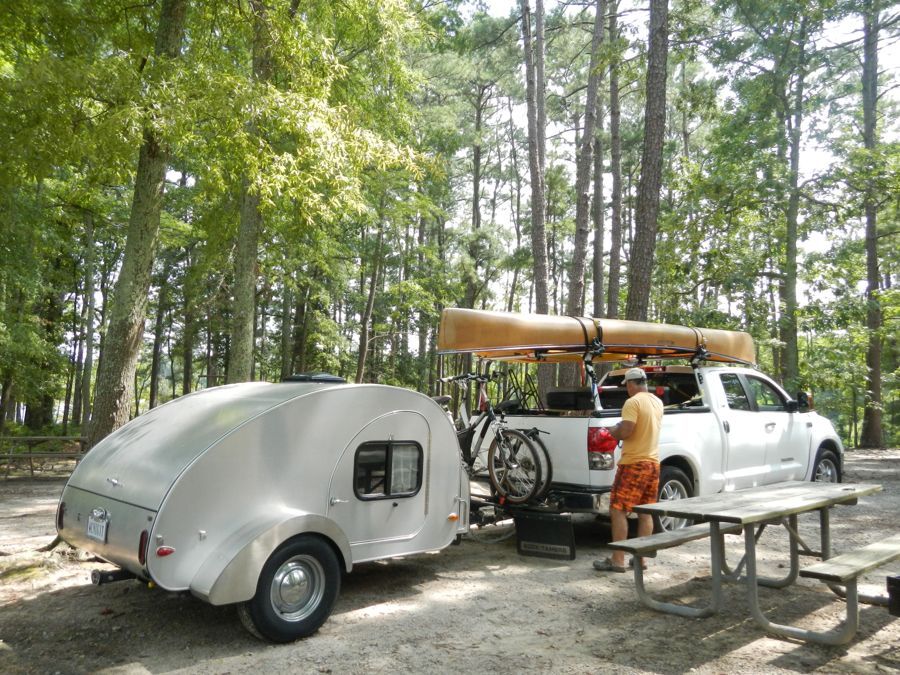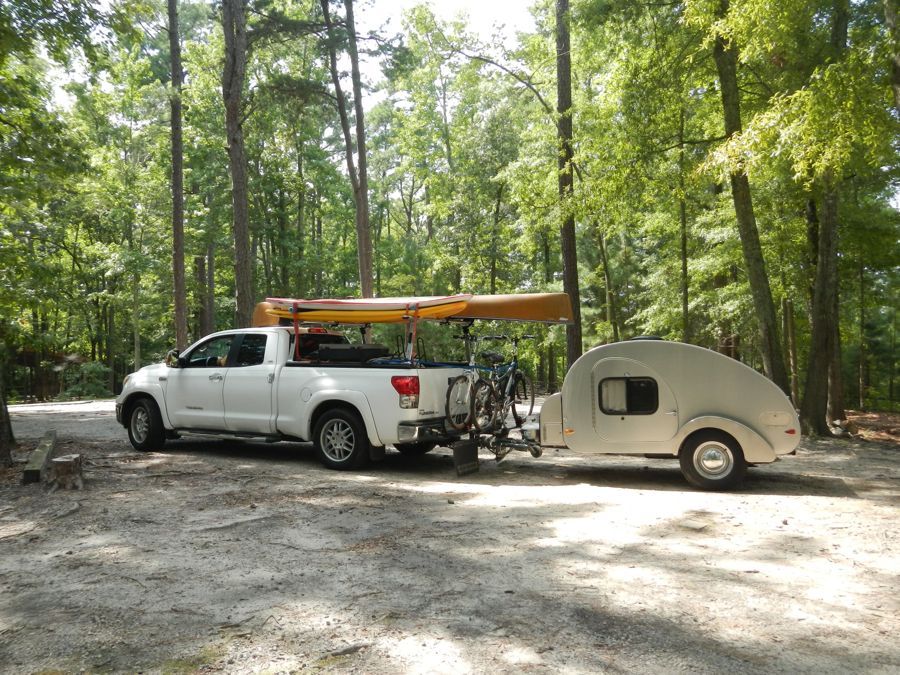-
We’re Back – Thanks for Your Patience! We’re thrilled to welcome you back! After some time offline, our site is up and running again, though you may experience occasional instability as we work through the final steps of restoring full functionality. Your understanding and support mean the world to us – thank you for sticking with us through this!
-
Email notifications are being sent but may be blocked by spam filters. If you don’t receive an expected email, please check your spam folder.
You are using an out of date browser. It may not display this or other websites correctly.
You should upgrade or use an alternative browser.
You should upgrade or use an alternative browser.
Dual Hitch w/ bike carrier in use
- Thread starter mcjimjam
- Start date
Mark & Casandra
Junior Ranger
Which Yakima carrier do you have? I'd like to compare dimensions to our Kuat NV and see if a setup like this might work for us. We currently put our bike rack on the back of the trailer, but then have to remove it as soon as we arrive in camp so I can cook supper...which is not the most convenient. Do you have a closeup photo showing just the double hitch & bikes/rack better?
hiadventurer
Junior Ranger
I as well would be interested in the distance. I'm guess you both are equipped with a 2" hitch? I would be Interested in this type of setup howeverwe have an Outback with a 1.25" hitch and I haven't seen or been able to locate a dual hitch, I am guessing they don't make them for some safety reason...
I knew if I dug deep enough, I would find this post! It contains a close-up of the hitch and bike rack.
http://www.campinnforum.com/ubbthreads/ubbthreads.php?ubb=showflat&Main=971&Number=7193#Post7193
Don't have a model # on the Yakima. We bought it years ago, on a close-out sale, and there was no manual or info with it.
It is a 2" hitch that you can find either at Northern Tool or Harbor Freight.
http://www.campinnforum.com/ubbthreads/ubbthreads.php?ubb=showflat&Main=971&Number=7193#Post7193
Don't have a model # on the Yakima. We bought it years ago, on a close-out sale, and there was no manual or info with it.
It is a 2" hitch that you can find either at Northern Tool or Harbor Freight.
Last edited by a moderator:
Interesting.
No clearance issues while you are driving? I know you had said to be careful not to jackknife but regular driving, turning, backing up ok?
That looks like it extends about as far as a tailgate might. I have been wondering if I would have enough room if I dropped my tailgate so I could fit a motorcycle in a dual cab short bed.
No clearance issues while you are driving? I know you had said to be careful not to jackknife but regular driving, turning, backing up ok?
That looks like it extends about as far as a tailgate might. I have been wondering if I would have enough room if I dropped my tailgate so I could fit a motorcycle in a dual cab short bed.
Here's a REALLY close-up view of the set up. I had an extension added behind the dual hitch to give some additional clearance while turning to help avoid jack-kniving.
http://www.pbase.com/kgilbertsen/image/137643253.jpg
We don't use the extension as a rule, since jack-kniving is not really a big concern, as long as you stay aware while backing up.
BUT, if you don't use the extension, you have to first hook up your trailer to your tow vehicle, and THEN add the bike rack, followed by your bikes. The hitch release can't be lifted to free the trailer hitch from the ball - it hits the bottom of the bike rack...
The model of Yakima bike carrier we have is the Doubledown 2.
http://www.pbase.com/kgilbertsen/image/137643253.jpg
We don't use the extension as a rule, since jack-kniving is not really a big concern, as long as you stay aware while backing up.
BUT, if you don't use the extension, you have to first hook up your trailer to your tow vehicle, and THEN add the bike rack, followed by your bikes. The hitch release can't be lifted to free the trailer hitch from the ball - it hits the bottom of the bike rack...
The model of Yakima bike carrier we have is the Doubledown 2.
Last edited by a moderator:
Interesting...this might be just what I need.
I am thinking about selling my current truck and getting a smaller V6 Toyota. The access cabs are really small in back but the bed is long enough for my bike in back as it has an extra 12". However, they are hard to find as most are full crew cab models which loses a foot in the bed. Dropping the tailgate and using a bed extender gets the space back but rides right over the hitch. Extending gives more room and resolves clearance issues when turning. A longer trailer is also easier for me to back up (used to it since I have a boat).
I am thinking about selling my current truck and getting a smaller V6 Toyota. The access cabs are really small in back but the bed is long enough for my bike in back as it has an extra 12". However, they are hard to find as most are full crew cab models which loses a foot in the bed. Dropping the tailgate and using a bed extender gets the space back but rides right over the hitch. Extending gives more room and resolves clearance issues when turning. A longer trailer is also easier for me to back up (used to it since I have a boat).
Be a bit careful about using this much extension on a smaller vehicle. The extension multiplies the tongue weight (I am sure there is a formula but I don't know it off the top of my head) by a significant amount. It puts the weight further back so the leverage effectively makes more weight to the back wheels and reduces the weight on the front wheels.
My tow vehicle is now the Toyota Tacoma 4 door with the 5 foot bed. I am not sure what the difference in tongue weight is, but can say the truck handles well with or without the extension. But I should figure out exactly what the difference in tongue weights are with both configurations to be sure...
I found this calculator that might help:
http://www.visualsc.com/hitch_calc.htm
It looks pretty comprehensive.
I also found references that give a rule of thumb that a hitch extension reduces hitch capacity by 50%; the rack is effectively an extension, so by cascading two extensions you would reduce capacity by 75%.
http://www.visualsc.com/hitch_calc.htm
It looks pretty comprehensive.
I also found references that give a rule of thumb that a hitch extension reduces hitch capacity by 50%; the rack is effectively an extension, so by cascading two extensions you would reduce capacity by 75%.
Last edited by a moderator:
Wow, that's a considerable reduction. I am still OK with my tow vehicle, but someone with a vehicle rated at 2500 pounds or less might want to avoid this setup using these guidelines.
Thanks for the link.
Thanks for the link.

